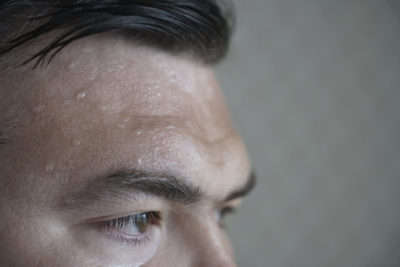Most people wouldn’t consider sweating to be an occupational hazard, but there are some serious safety and health issues involved with this natural process, which allows the human body to cool itself.
Let’s look at some of the potential job hazards associated with sweating, and what workers can do to minimize those risks.
Heat stress: When people exert themselves physically, they tend to start sweating, and this is particularly true if workers are toiling in hot and humid conditions. If people are not continually drinking water and taking periodic rest breaks in the shade, they can develop serious heat illness.
There are varying degrees of heat illness, starting with heat rash, which is skin irritation caused by excessive sweating.
The next phase of heat illness is heat cramps, where people experience muscle pains or spasms that occur during heavy exercise or heavy physical work.
The more-serious third phase of heat illness is heat exhaustion, where people begin sweating heavily, breathing rapidly and experiencing a fast pulse. They may feel faint, headachy, dizzy, fatigued and seem confused. Muscle or abdominal cramps, nausea, vomiting and diarrhea are other symptoms.
Heat stroke is the most serious form of heat illness. The body stops sweating and the person’s internal temperature spikes. People can develop brain or internal organ damage as a result of heat stroke and death is easily possible. Symptoms include nausea, confusion, disorientation, and loss of consciousness/coma.
Prevention: Workers need to be given periodic rest breaks in the shade and be provided with and encouraged to drink up to four cups of water per hour in hot and humid conditions. The most physically demanding tasks should be performed during the coolest part of the shift.
Workers should wear lightcolored, loose-fitting breathable clothing such as cotton and wear hats to keep direct sunlight off their heads.
Electrical shock: Safety agencies have issued safety alerts over the possibility of workers suffering electrical shocks as a result of sweat dripping into power tools that are plugged into electrical outlets.
Sweat contains water, but also minerals such as potassium, calcium, magnesium, zinc, copper and iron, which makes it a very good conductor of electricity. Workers receiving shocks as a result of sweating onto powered tools may not die, but they can experience lost work time while receiving medical treatment, including electrocardiograms to ensure that a shock has not caused heart damage.
Prevention: Corded power tools should not be used by workers in hot and/or humid weather conditions. Airpowered or rechargeable battery-powered tools should be utilized. If corded tools are used, they should be connected to a ground-fault circuit interrupter (GFCI), which is designed to prevent electrocution in damp or wet conditions.
Slippery when wet: Everyone knows that keeping one’s hand grip on an object is much more difficult, and sometimes impossible, if his or her hands are sweaty. If a worker’s hand slips off a ladder rung, serious injuries or death may occur. Even if one’s hand slips off a tool such as a wrench handle while force is being applied, workers can suffer serious injuries.
Prevention: Wear slip-resistant gloves or use a slip-resistant coating on your hands. Also, select tools with slip-resistant handles.
Fogged lenses: People working in hot conditions while wearing safety glasses or face shields are all too familiar with the problem of lenses fogging up. This situation is more than just annoying. It can create a serious safety issue, because it impairs vision.
Prevention: Workers should use anti-fog eyewear or apply an anti-fog coating to eyewear. Many workers won’t use protective eyewear because of fogging issues, which puts them at significant risk for an eye injury.






